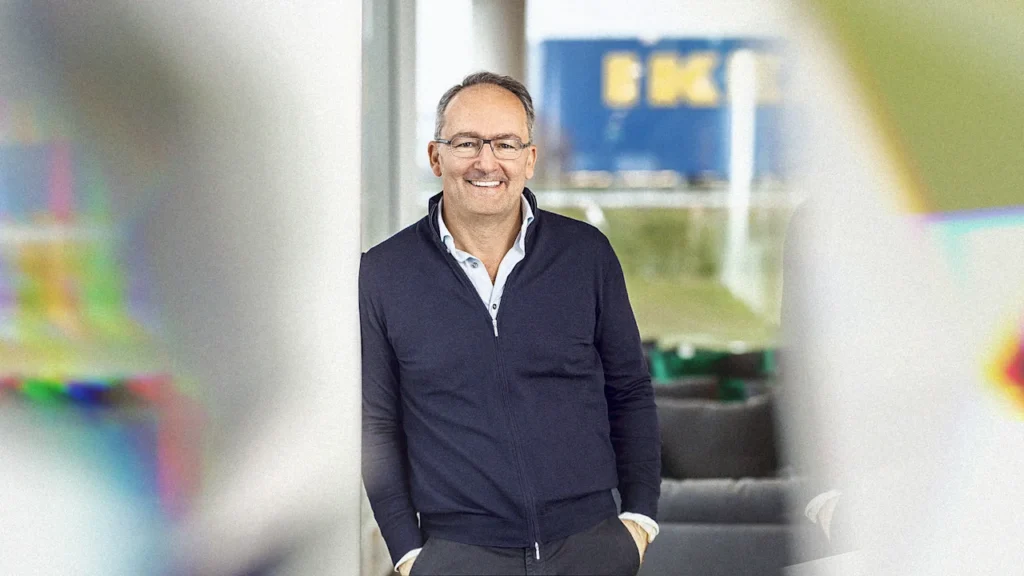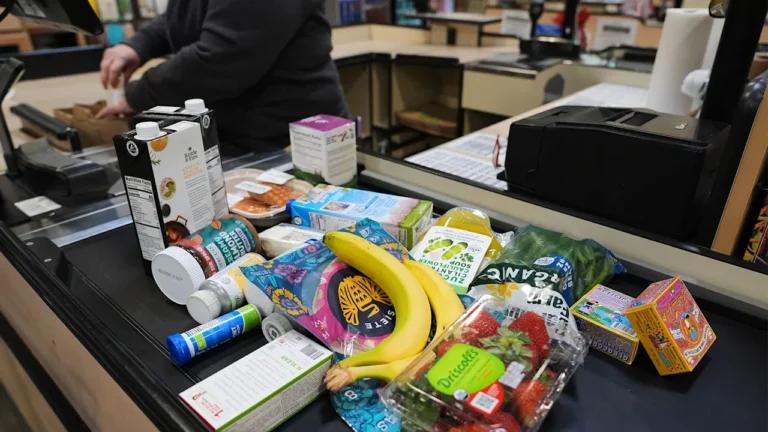
Ikea’s new CEO Juvencio Maeztu is calling to tell me about the Ingka Group’s latest earnings (that’s the parent company behind Ikea). As it turns out, there are worse fates than a company making a little less money than it did last year.
In August, Ingka Group announced that its long-time CEO Jesper Brodin would be stepping down, as Maeztu took the role. An economist by training, Maeztu has worked at the company for more than 25 years, and brings a powerful international perspective to the position—having started as a store manager in Madrid, before eventually taking over as CEO of Ikea India. For the past seven years, he’s served as deputy CEO and CFO under Brodin.
We spoke around the release of Ingka’s 2025 financial earnings, which Maeztu characterizes to me as “mostly flat.” Revenue is down 0.9% (to €41.5 billion) as the company fights inflation to keep prices low. Tariffs have yet to fully enter the equation in these figures—but Trump’s 50% tariffs on furniture announced in September were significant enough that Ikea raised prices to help offset them.
On the brighter side, store traffic was up 1.3%, online sales were up 4.6%, and overall item sales grew 1.6%.
In our conversation—representing some of Maetzu’s first public comments since being appointed to the position—he detailed his biggest priorities for the company, while addressing the challenges of operating a budget-friendly furniture business in a volatile global economy.
Now that you’re officially CEO, what is your immediate focus for Ikea?
The announcement was made mid-August, and the last three months I have been traveling around many countries to learn about the reality from the shop floor, and then talking with consumers and colleagues and coworkers. And that has cemented three things that are quite important to deliver to the care vision (that caring for people and the planet is core to Ikea’s purpose). Because we will not change the care vision. We will not change the business idea.
I will keep putting a lot of focus on growth; not growth only in mature markets or more European-based growth, but many markets, U.S. included, and India and China. Growth is a way to be more present in homes. So growth is not connected with profit to the shareholder, it’s connected with affordability for the many people. You could say we can never achieve our vision if we don’t grow. So we have to substantially grow.
The second thing is to double down . . . on the need for cost transformation . . . and the need to keep costs low. Because the best frame of low price is a low cost. You cannot be a low-price company if you are not a low-cost company. And I will double down on the resilience of the company.
And then the third one is simplicity. So normally, big companies like us start to be bureaucratic, and from the leadership perspective, we have to learn how to lead the company in a more agile way, faster decision making, less layers, and at the same time, more agility in the decision making.
We have a good brand, we have a good omni channel capabilities today. We have amazing cultural values with high coworker engagement, super high right now. And then at the same time, we have a strong balance sheet. So you could say we have a lot of assets that allow us to really double down in the growth, in the cost transformation, and the simplicity.
Looking over your earnings, where is that revenue dip coming from?
We are selling more quantities at a lower price.
If I take one step back, we measure performance in four dimensions. So one of the four is a financial dimension, and I will comment on that. But the other three are the climate dimension (we call it “better planet” for all), the social dimension (“better life” for people), and the consumer dimension (“better homes” for the customer).
Today, as we release the financial result. It’s almost flat revenue—0.9% lower, almost flat, which is €41.5 billion (approximately $47.9 billion). However, what’s happening is exactly what we wanted to happen, because our physical visitation is growing, our online visitation is growing, and our [sold] quantities are growing.
So basically, [revenue is down] because we have kept low prices. But then we are very happy [about] the underlying business.
For us, growth is not a mechanism to pay more dividends to the shareholder. Because we are owned by a foundation. So 85% of the profit remains in the company, and 15% is the dividend to support the charitable activities. . . . We normally say profit gives us resources to keep investing in the future and low price.
How are general inflation and other factors affecting your supply chain?
The overall supply chain is quite stabilized now. We came from many disruptions in the last year, and that disruption is still happening at the end of this fiscal year, but now it’s quite stable. So we are not increasing prices in general.
We constantly hear that physical retail is challenged, or on the brink of collapse. But I noticed Ingka centers—your malls, basically—had an influx of new foot traffic this year. I’m curious about your take on large-scale retail right now.
People still have the need to socialize. People still have the need to go out. That’s why it’s important that we call it a meeting place—not necessarily a shopping center—and when you visit our meeting place it’s a way to connect with the communities . . . to create traffic with engagement and food and events. So in a world that is omnichannel and online, people still have the need to socialize. So that’s why we keep seeing more visitors in the shopping center and more visitors in the Ikea physical store.
Then what is really important is that the visitor still finds a good value for money. That’s why we don’t have too much in discount activity on Black Friday. We are more trying to have everyday low prices. And that’s why we keep investing in that. So somehow customers recognize that, you offer them a fun day out in the meeting place, shopping center, the Ikea store, and then you keep prices low. You know, cost of living is increasing, not only in U.S., but anywhere in the world.
The cost of housing is increasing all over the world, so [our] care vision—better life at home by providing more affordable home furnishings—it’s not only timeless. It’s even more relevant today than some years ago.
Now that they’ve stabilized a bit, how do you see the impact of tariffs affecting Ikea?
I think the entry point is not only tariffs. The entry point is that companies who operate globally, like us, are living in a more complex world, in a more volatile world. Sometimes because of tariffs, sometimes because of currencies, sometimes because of the limitation in global trade or geopolitics. But we need to learn as a company, how can we build the resilience to keep navigating the circumstances?
And that’s why we distinguish what is the short term and the long term. And for us, the long term is to build the resilience in the company, and the low cost in the company, that can keep us in the low price agenda.
And then, of course, we always try to mitigate the impact—not necessarily when we have to increase prices because of tariffs—normally . . . we try to absorb the impact. But I would say it’s not only tariffs in U.S. There are many reasons why global trade is a bit volatile, but in the long term, we will keep growing. In Europe, in the U.S., in China and India, all over the world.
This conversation has been edited for length and clarity.

